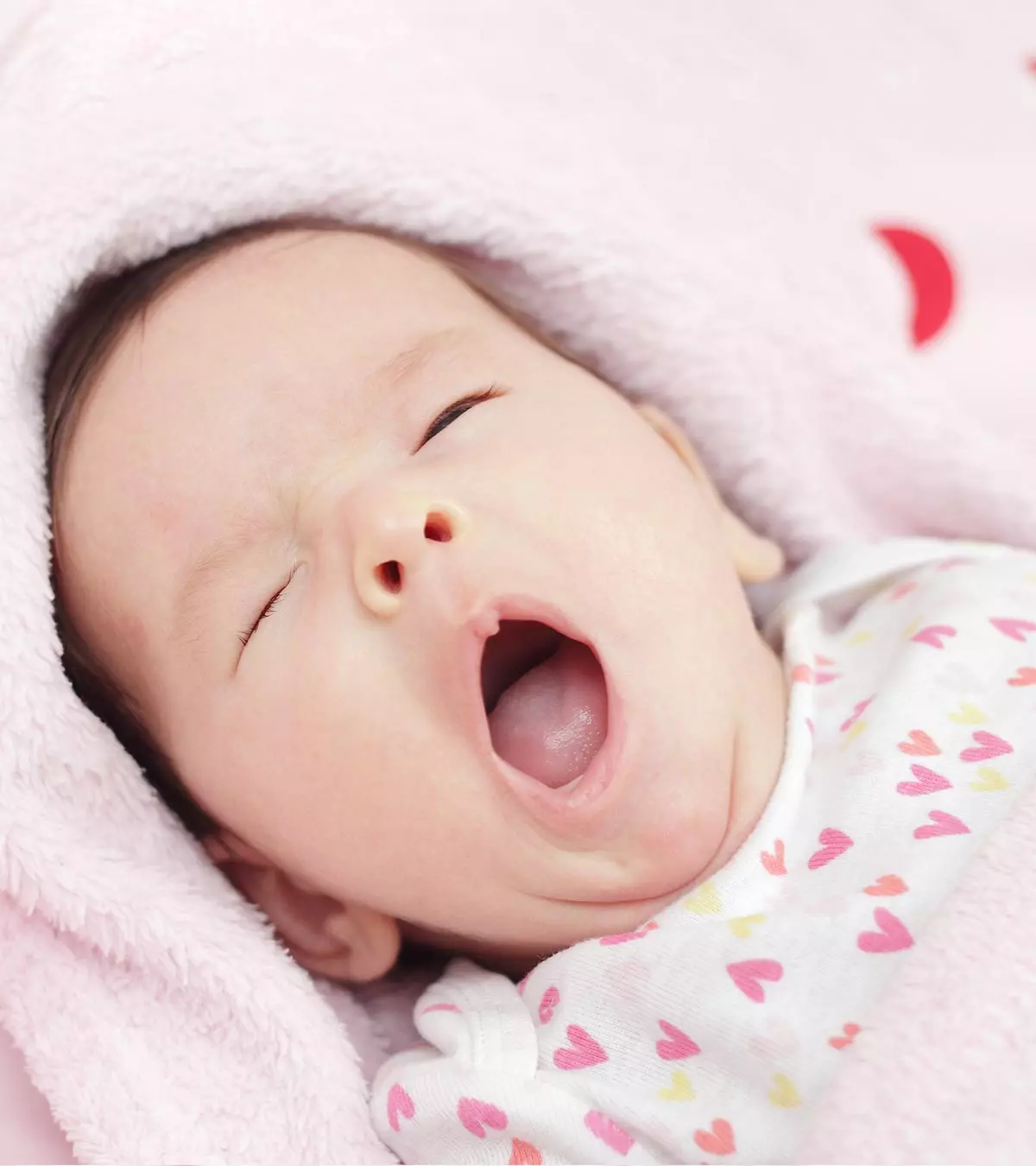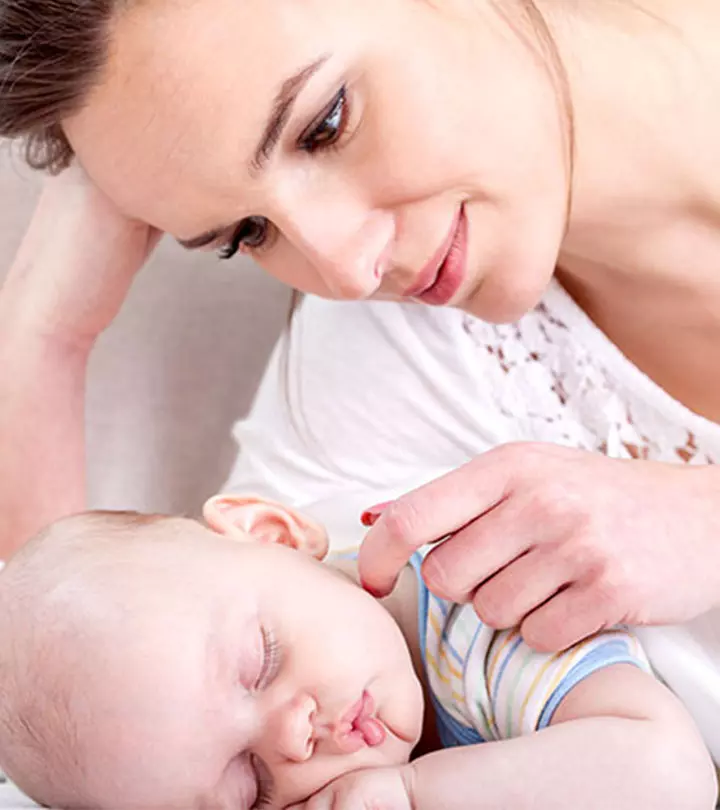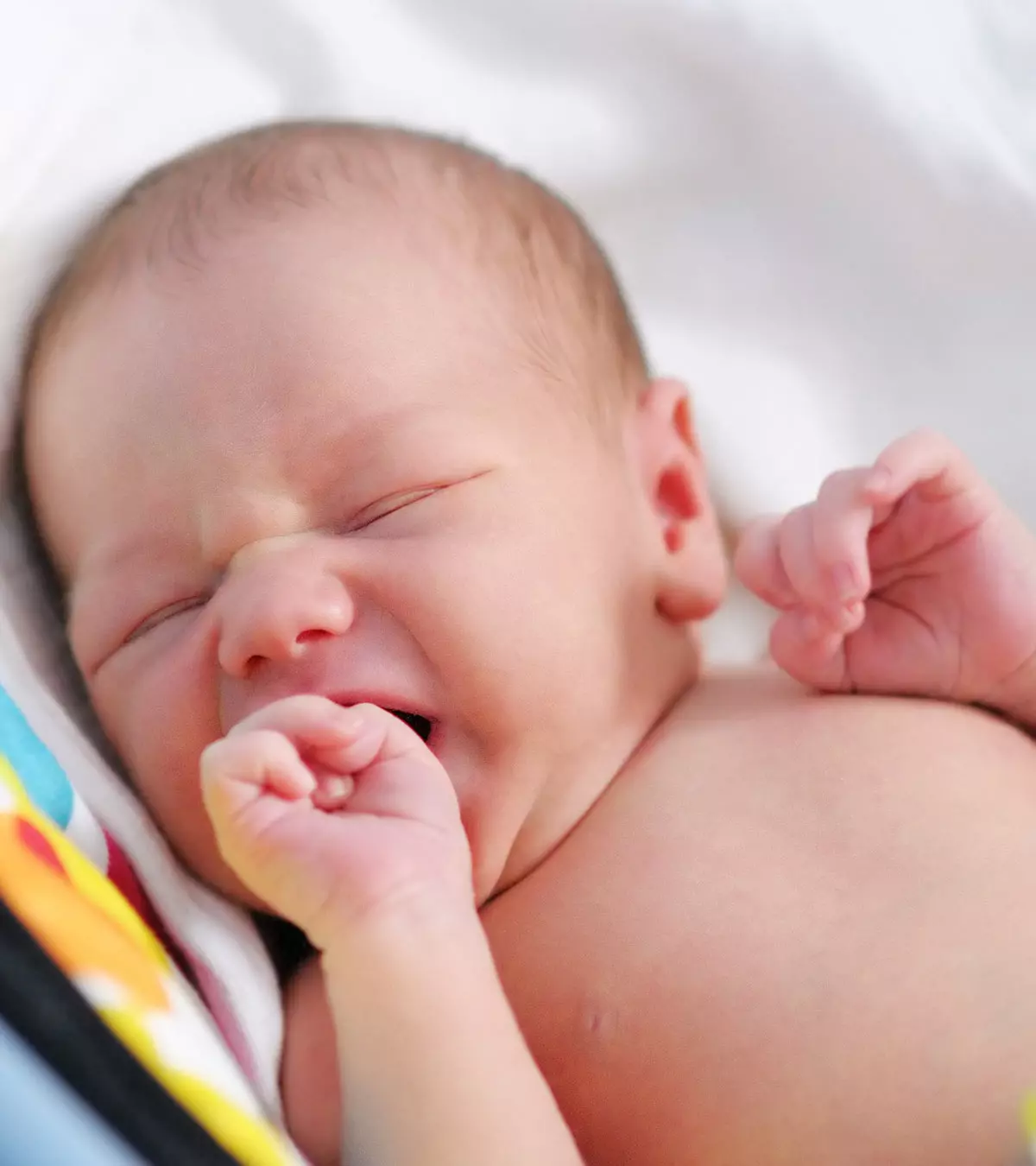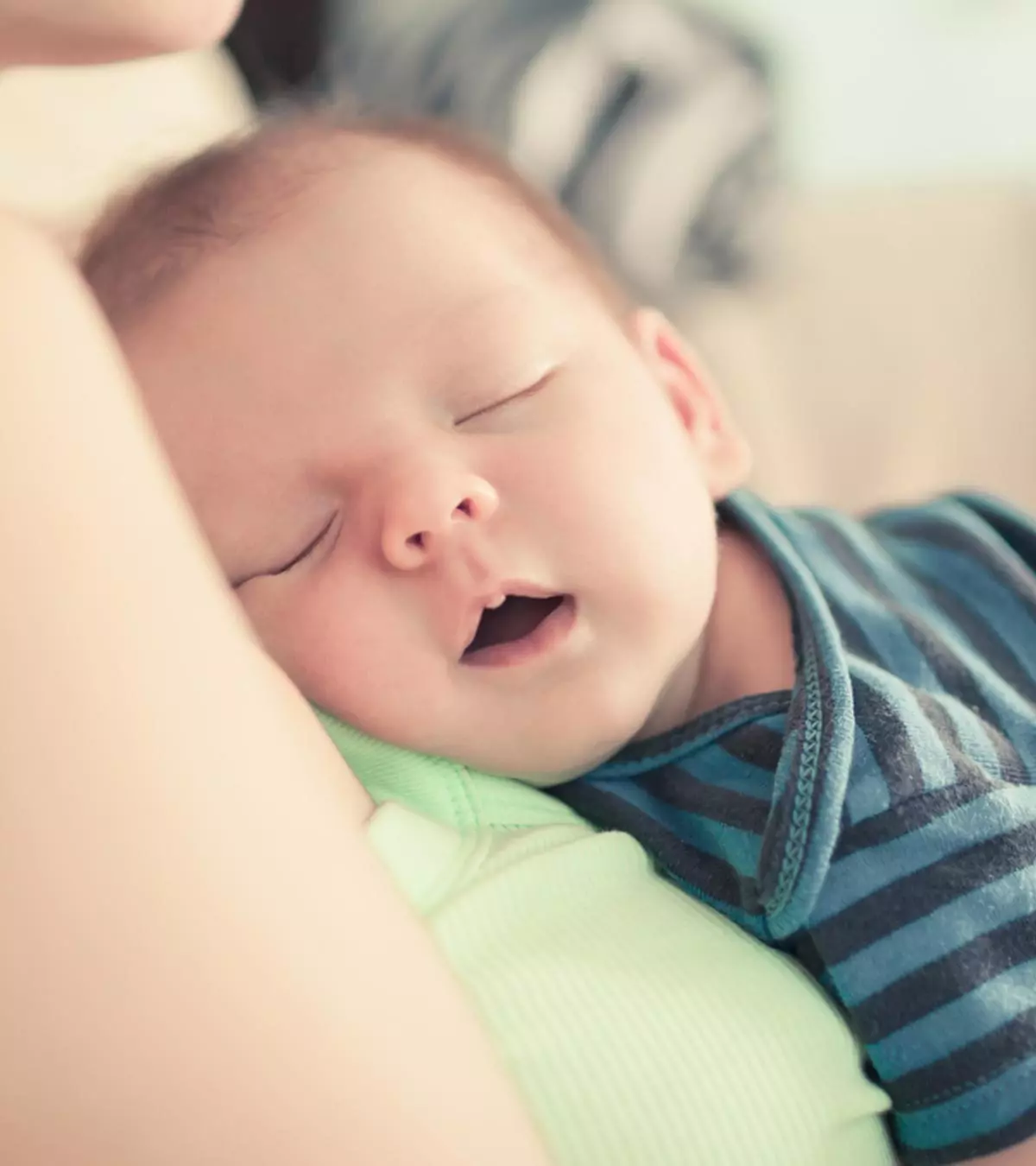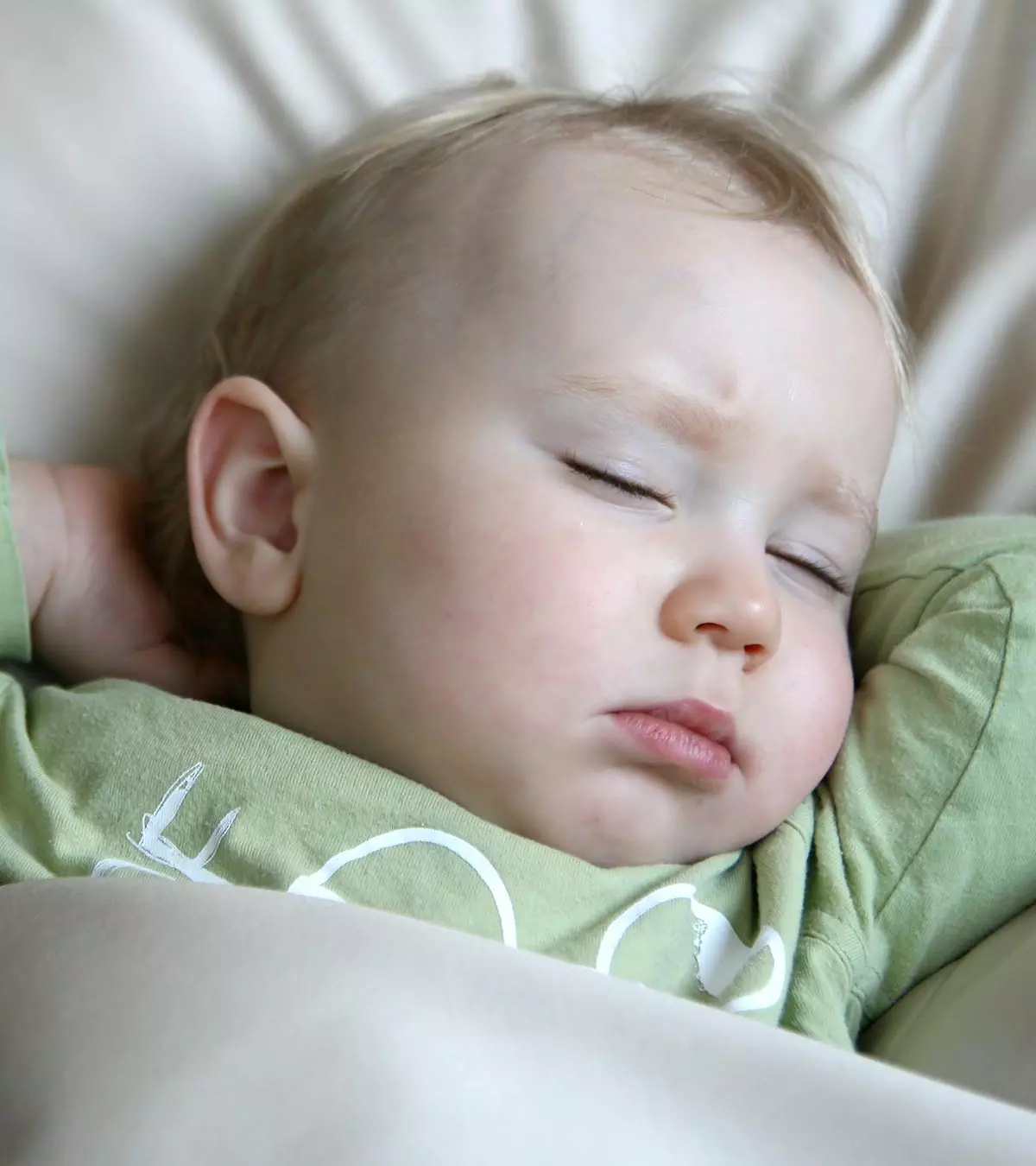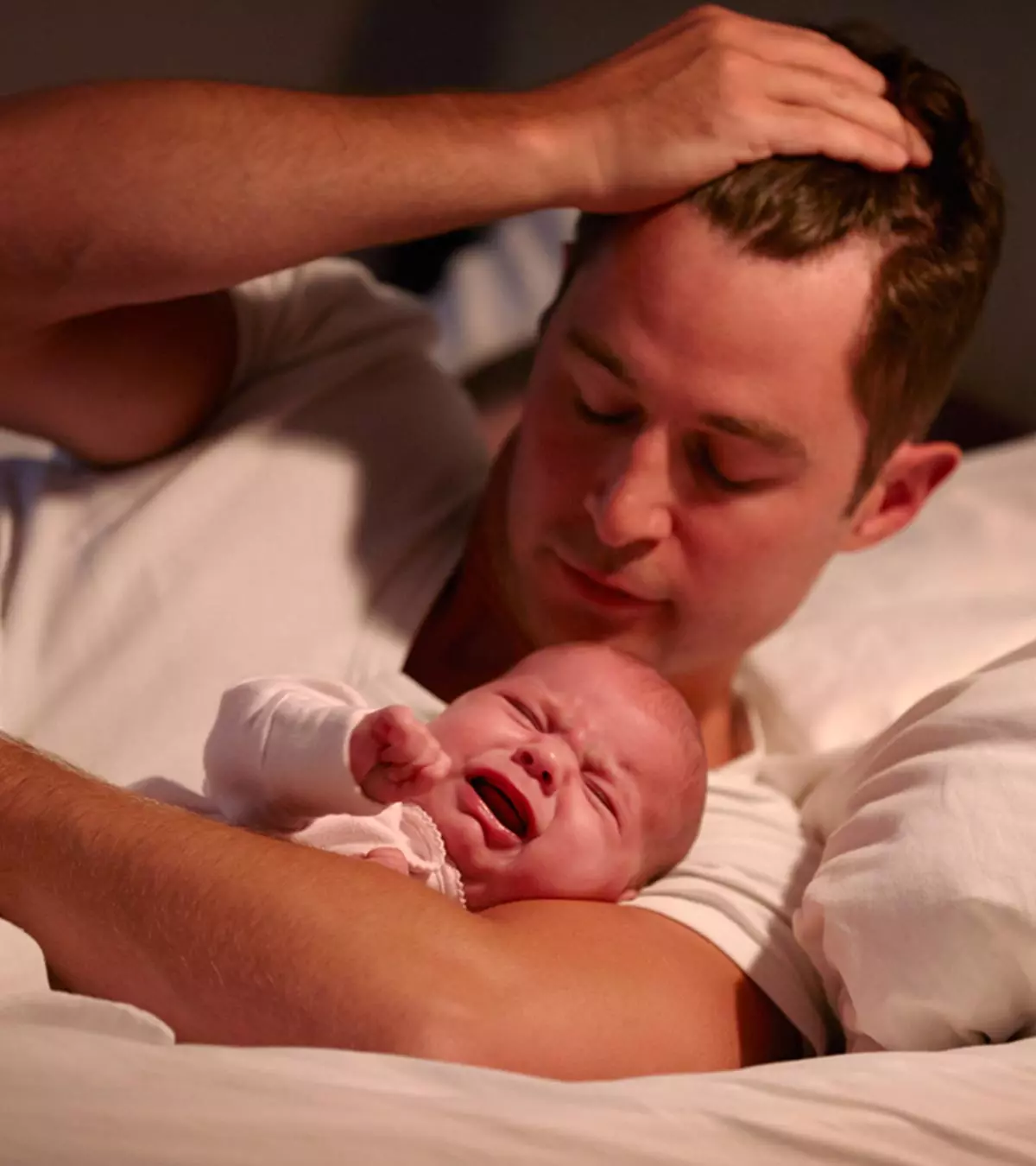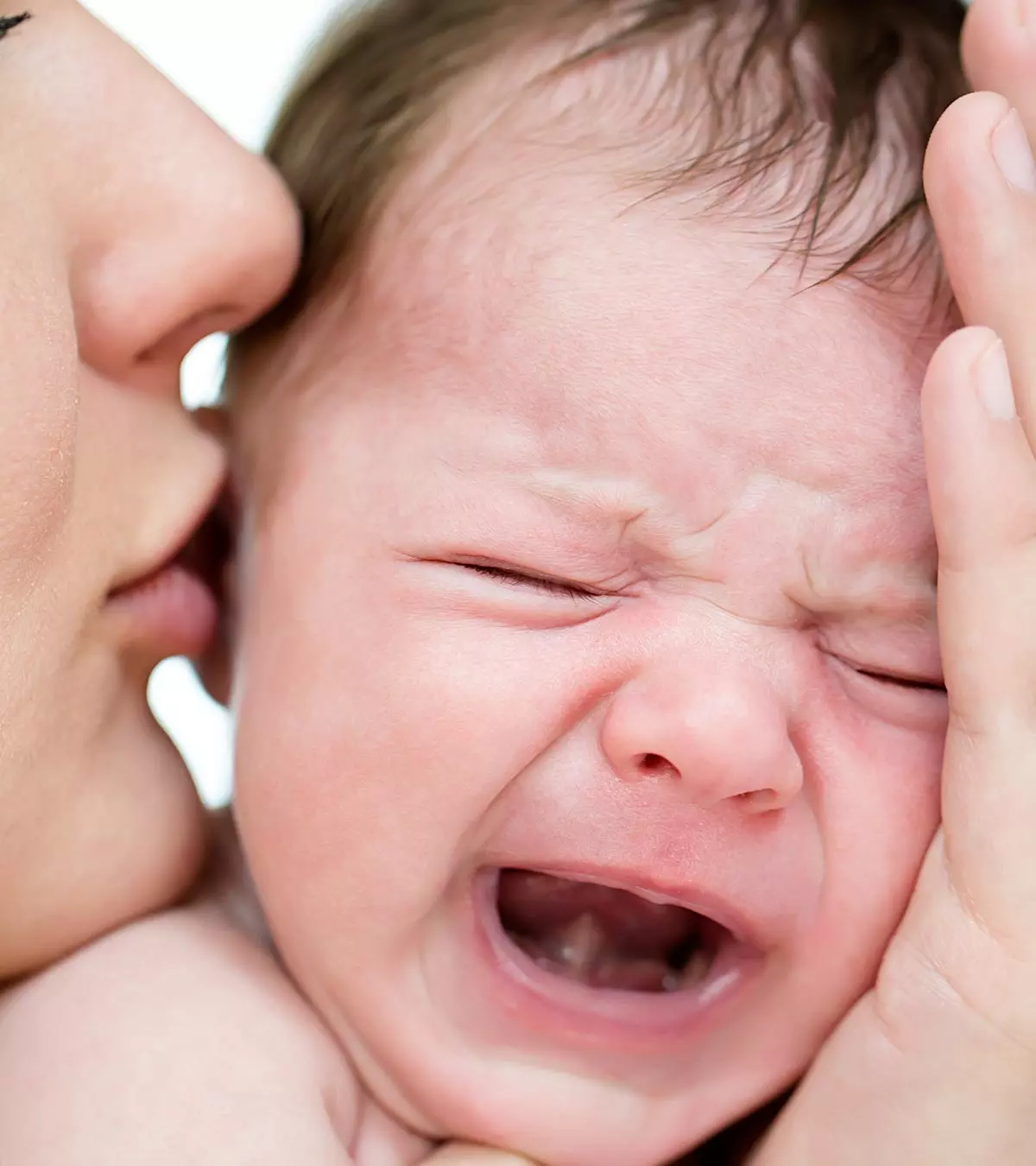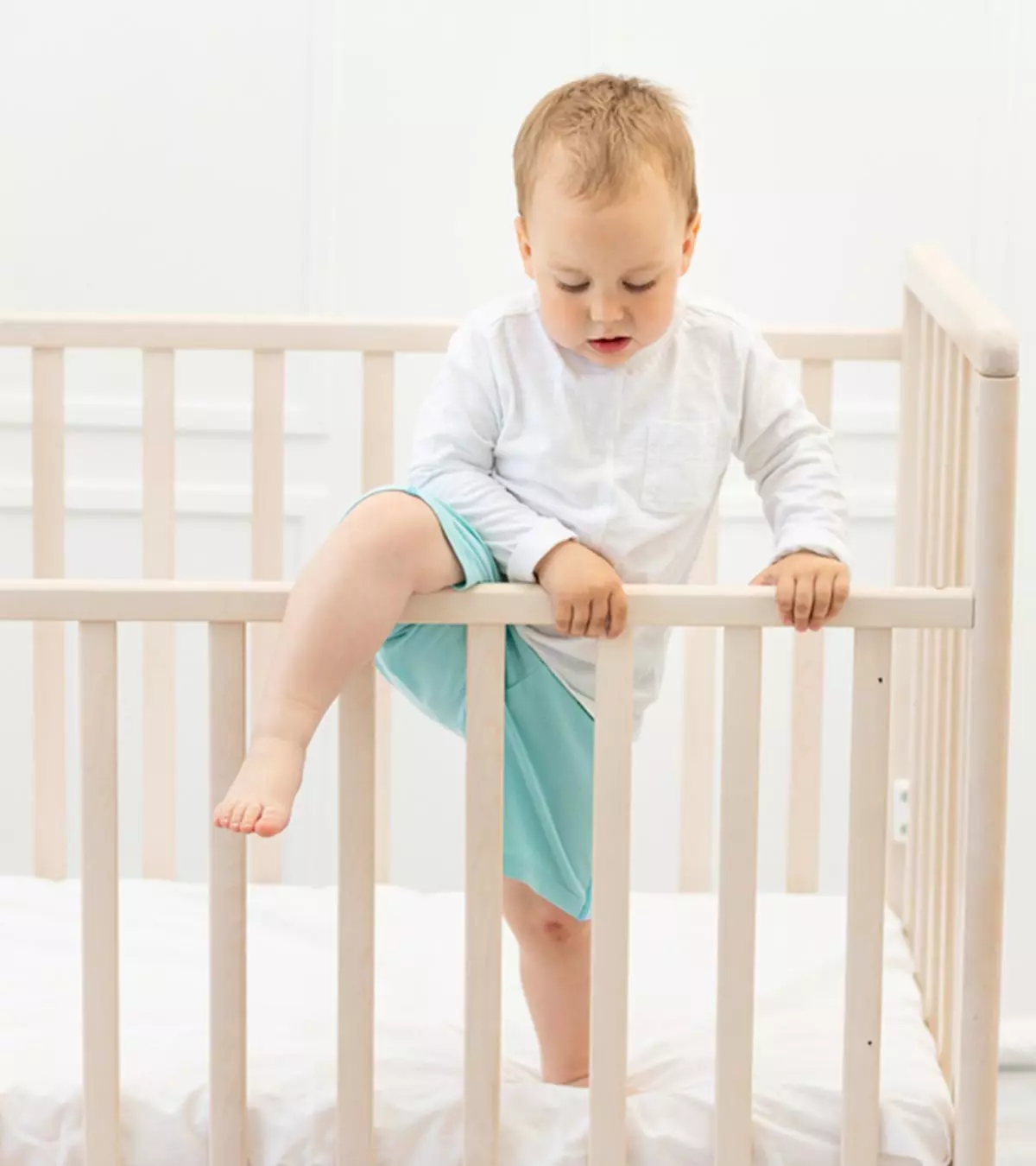
Image: Shutterstock

Most babies begin to stand independently and even walk with support at around 12 months. These developmental milestones are exciting for you and the baby, but these newly learned skills enable a toddler to climb out of the crib (1). Understanding toddler behavior is key, as their natural curiosity often leads to actions like climbing out of the crib, which can be unsafe. A toddler climbing out of the crib or cradle is scary since it could cause adverse consequences. Hence preventing a toddler from falling is imperative to ensure your toddler stays safe until they are ready to switch to a toddler’s bed. Read on to know why a toddler tries climbing out of the crib and what you can do to prevent your toddler from falling and injuring themselves.
Key Pointers
- Between nine to 12 months, babies start pulling themselves up, increasing the risk of falling from a crib.
- For your toddler’s safety, lower the mattress to increase the length of the crib.
- Instruct your toddler not to climb on the crib and remove any toys in it for safety purposes.
- Baby proof the room, use a firm mattress, and check if they accidentally hit their head during a fall.
Why Do Toddlers Climb Out Of A Crib?
According to the Nationwide Children’s Hospital, on average, 10,000 crib-related injuries occur every year among children aged two years and younger. Out of these, more than 66 percent of injuries occur due to a fall from the crib (2). So, why do toddlers climb out of their crib?
A one-year-old is a curious being who wants to explore the world around them. This inquisitiveness increases as the baby grows, which is why most toddlers between 12 and 24 months attempt climbing out of the crib. However, some babies can try climbing out of the crib as early as 12 months. Hence, you should stay alert right from when your baby begins pulling themselves up to stand and cruise with the support of furniture.
Most babies can pull themselves up to stand between nine and 12 months (3). Rapid gross motor development leads to this achievement. The baby learns to place a leg on the crib’s railing and balance their body weight on the other leg. However, at this tender age, your toddler cannot lean forward and safely pass out of the crib, increasing the chances of a slip and a fall. Therefore, observing some safety precautions is imperative.
How To Prevent A Toddler From Falling From the Crib?
Studies indicate that when children climb down from the crib, they descend about 4.5 feet without much assistance or protection. Once out, they could go around exploring without parental supervision. This could result in accidental falls and injuries.
Mel, a mother and blogger, shares her ordeal and says, “When we were in Tahoe a few weeks ago, he climbed out of it (crib) every time we put him down for his nap or for bedtime. He would run upstairs with his jammies off and he was so proud he climbed out. We were hoping it was just a pack-n-play thing, but when we got home from Tahoe, that night, he kept climbing out of his crib. It was a loooooong night but finally he fell asleep and stayed in his crib. The next day for naptime was a disaster. He wouldn’t stay in his crib. The 10th time I went to put him back in his crib, I opened his door to find this: He had taken things OFF his walls!!!!! (i).”
The following tips could keep your toddler safe in the crib.
1. Lower the mattress
According to the American Academy of Pediatrics (AAP), ”children are most likely to fall out of the crib when the mattress is raised too high for their height, or not lowered properly as they grow (4).”
Hence, lower your baby’s mattress height, preferably before or around the same time, when they are most likely to hit the milestones that enable them to climb out of the crib. Experts recommend that the gap between the mattress platform and the top of the crib railing should be at least 26 inches (5).
Go the extra mile and remove all the soft animals, toys, and baby blankets from the crib, as the baby/toddler may step on them and attempt to escape from the crib. Furthermore, ensure you place no furniture around the crib. In most cases, babies fall off the crib while trying to reach the furniture or use it to climb out of the crib.
2. Adjust crib’s position
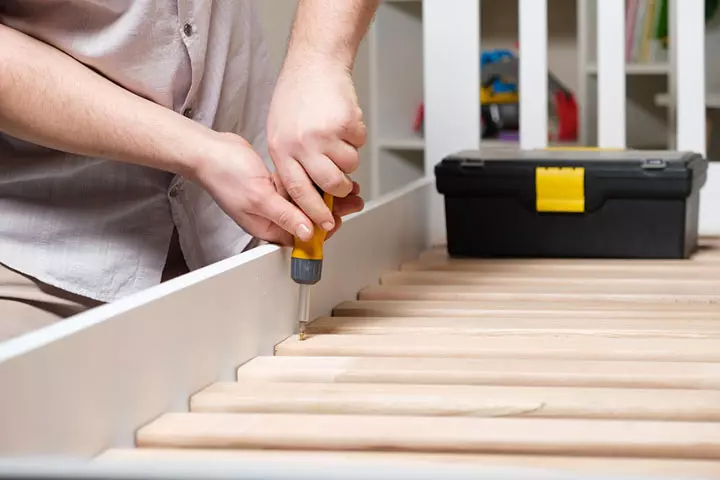
If your baby or toddler’s crib has a side slightly higher than the other, then place the elevated side towards the room and the lower side towards the wall. This can help secure babies and young toddlers in the crib. This trick won’t work for those who have cribs with even sides.
3. Try a sleeping sack
Sleeping sacks wrap around bodies snugly and prevent movement, especially legs. Hence, it’s a good idea to try a sleeping sack or wearable blanket for your toddler to prevent them from hoisting over the crib’s railing and climbing out. You can buy an age-appropriate, good quality, and comfortable sleeping sack online or from a store. If your toddler knows the trick to unzip the sleep sack, look for options that come with features that offer side or back zip.
4. Use sleep-to-wake clock
A sleep-to-wake toddler clock is a common tool to sleep-train toddlers. You can utilize the same tool to keep your toddler from climbing off the crib. A sleep-to-wake clock gives visual cues that help toddlers understand when they should get up from the crib. You can set the clock to change colors so that younger toddlers may know when they should be awake, whereas you can teach older toddlers to see and recognize the numbers indicating the time to wake up.
This trick works for older toddlers who have a basic understanding of colors and numbers. Alternatively, you can use a video monitor to catch your toddler while they are trying to climb out of the crib.
5. Discipline the toddler

Disciplining a young toddler isn’t easy, but this shouldn’t deter you from setting the expectations right. A straight and stern “no” often goes a long way if you use it right the first time when you see your toddler climbing out of the crib. Along with saying no, talk to your toddler, especially when they are a little older, and tell them why you don’t want them to climb or jump out of the crib. Try praising your toddler when they stay in the crib. Gently remind them why it’s important to stay there, creating a positive environment for learning boundaries.
If, even after reminders, the toddler tries to crawl out of their crib often, don’t lose patience. Try again later. Remember, yelling or scolding a toddler could make them stubborn and rebellious. Therefore, be calm yet consistent with your approach, causing the toddler to understand the instructions eventually.
 Quick fact
Quick factTips To Minimize Adverse Effects Of Falling
Despite your efforts to prevent a fall, there could be instances when you might be unable to prevent a fall entirely. Therefore, you can take other steps to minimize the adverse effects of falling. Here are some tips you should follow (5) (10).
- Don’t use crib nets as barriers to stop a toddler from climbing out of the crib, as these nets can trap toddlers and pose a threat of choking due to strangulation.
- Place the crib away from the windows, walls, and doors. If there is a window nearby, lock it or put a window guard. Also, use baby gates in doorways, bathrooms, and stairways to prevent children from wandering into danger.
- Remove all the furniture, especially those with fine edges, from the sides of the crib. Doing so can help avert severe injuries that may occur when the toddler falls from the crib.
- Keep a firm mattress on the floor such that it surrounds the crib from all sides. This tip is beneficial for toddlers who frequently climb out of the crib, especially during the night.
- Avoid placing pillows, sleep positioners, toys, and bumpers within the crib as these can be stacked to ease the climbing process. Similarly, avoid loose blankets as these can cause a risk of strangulation (11).

- Baby-proof the room. After a fall, a toddler may wander around the room unsupervised, raising the risk of injuries. Therefore, baby-proofing the room is a good idea to ensure your toddler’s safety. Here are some things to do.
- Put corner guards on the edges of any piece of furniture or item with sharp edges in the baby’s room.
- Lock drawers and cabinets so that the toddler may not take things out, especially small items that they may accidentally ingest.
- Hide all the electrical cords and install cord-free drapery to avert any falls and accidental strangulation.
- Place only those floor rugs that have anti-skid protection under them. Remove any carpet without this feature, as it can cause the child to trip and fall.
- Secure any heavy furniture such as bookcases, television cabinets, wardrobes, and dressers to the wall.
 Quick tip
Quick tipWhat To Do If The Baby’s Head Is Hit?
Several toddlers fall from their crib and land unhurt. But in some cases, the toddler may accidentally hit their head. In such situations, don’t panic. Instead, pay attention to your baby/toddler’s first-aid through the following steps.
- Examine their head carefully and check if there’s any scratch or cut that might be bleeding.
- If you notice bleeding, press or apply pressure over the wound gently to reduce the bleeding. Clean the wound using cotton or clean water. Bandage the wound with a clean gauge if required.
- If there’s a bump on your toddler’s head, don’t fret. It could be due to swelling, which can subside if you apply ice, ice pack, or frozen food packet to soothe the affected area.
After giving the first aid, monitor the toddler for several hours. If the child seems happy and healthy, all should be good. However, if the toddler is crying inconsolably, looking dizzy, vomiting frequently, increased sleepiness, with sudden high-grade fever or acting stranger than usual, consult your doctor promptly. These signs might indicate a possible traumatic head injury, such as a concussion (6).
Signs Your Toddler Is Ready To Switch To A Bed
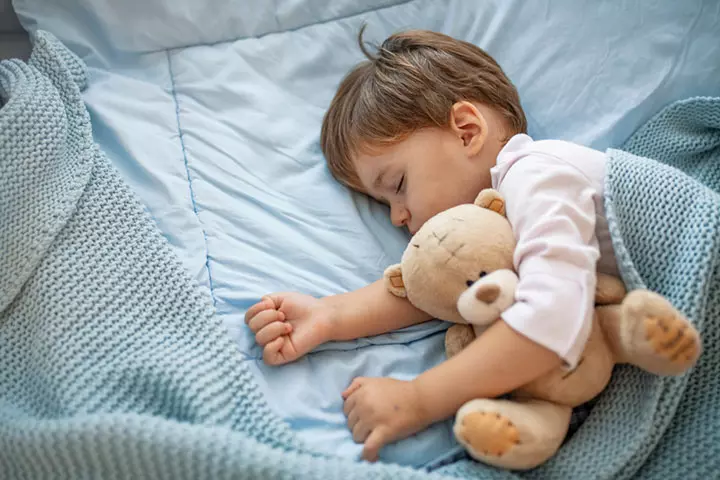
A toddler climbing out of the crib isn’t the sign that they are ready to switch from a cot to a bed. There aren’t any apparent signs indicating that the toddler is ready to transition. If you are wondering when to switch to a toddler bed, experts say that when a toddler easily puts their leg up to the top of the crib rail, it’s better to move to a toddler bed to prevent falls. It may happen anytime between 18 months to three and a half years or maybe a little earlier.
Experts also suggest that parents watch out for cues like the crib railing being at par with the child’s chest when they stand or the child being close to 35 inches in height. Such toddlers may easily climb over the crib walls to explore the world around them. Furthermore, a child may be ready for transition if they tend to demand a switch to a toddler bed, are well-behaved when placed outside the crib, sleep through the night, and self-soothe back to sleeping when they awaken at midnight (12).
Sky, a mother, shares her journey of transitioning her 18-month-old from a crib to a bed. She says, “The reason why we decided to move him to a toddler bed is because he was beginning to try climbing out of his crib, and the lowest setting for his crib didn’t seem so low anymore for him… Finn has always slept in his own room since he was 3 weeks old, so we thought that the transition wouldn’t be as hard, but we were wrong! He struggled a lot for the first five days… The 5th night is when things started to get much better. He only complained when we first left the room but didn’t try to get off his bed. He played on his bed for about 10 mins then fell asleep until 6:30 am in the morning (ii).”
Frequently Asked Questions
1. What is the most common injury due to cribs?
According to studies, the most common injury caused by falling from cribs or playpens is a soft tissue injury in the head and neck regions (7).
2. Can falling off a bed cause brain damage in babies?
According to studies, the chances of intracranial injuries or skull injuries caused by falling off a bed or other infant products are comparatively less than ICI caused by falling from one’s arms, windows, or the attic (8).
3. What are some common mistakes parents make when their toddler starts climbing out of their crib?
Parents may worry about their child falling out of the crib once they frequently climb out. One common mistake they may make is overreacting. This may make the child repeat the action to attract attention. Furthermore, parents may buy a crib tent to keep the baby inside the crib. However, crib tents pose strangulation and entrapment risk (9).
4. At what age do you remove the crib walls?
Crib walls help keep the baby from tipping over during sleep while standing up or playing; therefore, it is not advisable to remove the walls. However, you may consider removing one side of the crib if your child has learned the bed safety rules and is transitioning from crib to bed.
A toddler climbing out of a crib is a common phenomenon. Their innate curiosity to know the world around them is the most common reason they keep trying to get out of their crib. When a toddler climbs the crib and tries to get out, it puts them at risk of accidental injuries. However, staying alert and planning your toddler’s safety can help prevent such accidents. Avoiding crib nets, baby-proofing the room, keeping the crib free from pillows and soft toys, and lowering mattresses’ height are simple ways to keep your toddler safe and have a peaceful sleep.
Infographic: Preventing Crib Hazards
Being aware of the critical facts and information about crib safety could help lower the risk of injuries in infants and toddlers. Here is an infographic that illustrates vital points that may aid in preventing crib hazards and enabling safe sleep in toddlers.
Some thing wrong with infographic shortcode. please verify shortcode syntax
Illustration: Effective Tips To Prevent Toddler Climbing Out Of Crib
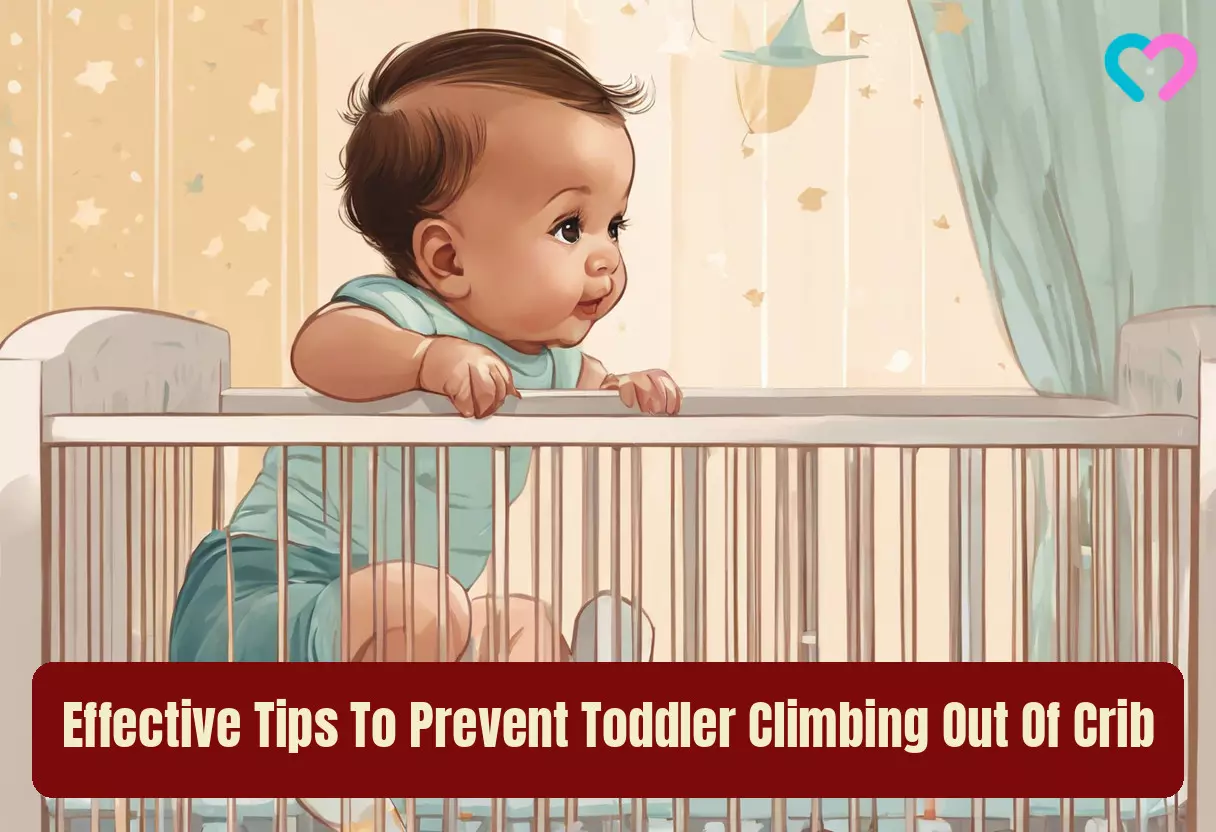
Image: Stable Diffusion/MomJunction Design Team
Learn how to keep your toddler safe in their crib with this helpful video! Discover tips and tricks to stop them from climbing out and keep them safe.
Personal Experience: Sources
MomJunction articles include first-hand experiences to provide you with better insights through real-life narratives. Here are the sources of personal accounts referenced in this article.
i. An Escape Artist, a Climber & a Crib Tent;
https://thelarsonlingo.blogspot.com/2014/11/an-escape-artist-climber-crib-tent.html
ii. Transitioning my toddler to the bed;
https://skyaprille.wordpress.com/2025/01/07/transitioning-my-toddler-to-the-bed/
References
Community Experiences
Join the conversation and become a part of our nurturing community! Share your stories, experiences, and insights to connect with fellow parents.
Read full bio of Maria Carmela Villania-Mamauag
Read full bio of Swati Patwal
Read full bio of Rohit Garoo
Read full bio of Ghazia Shah





